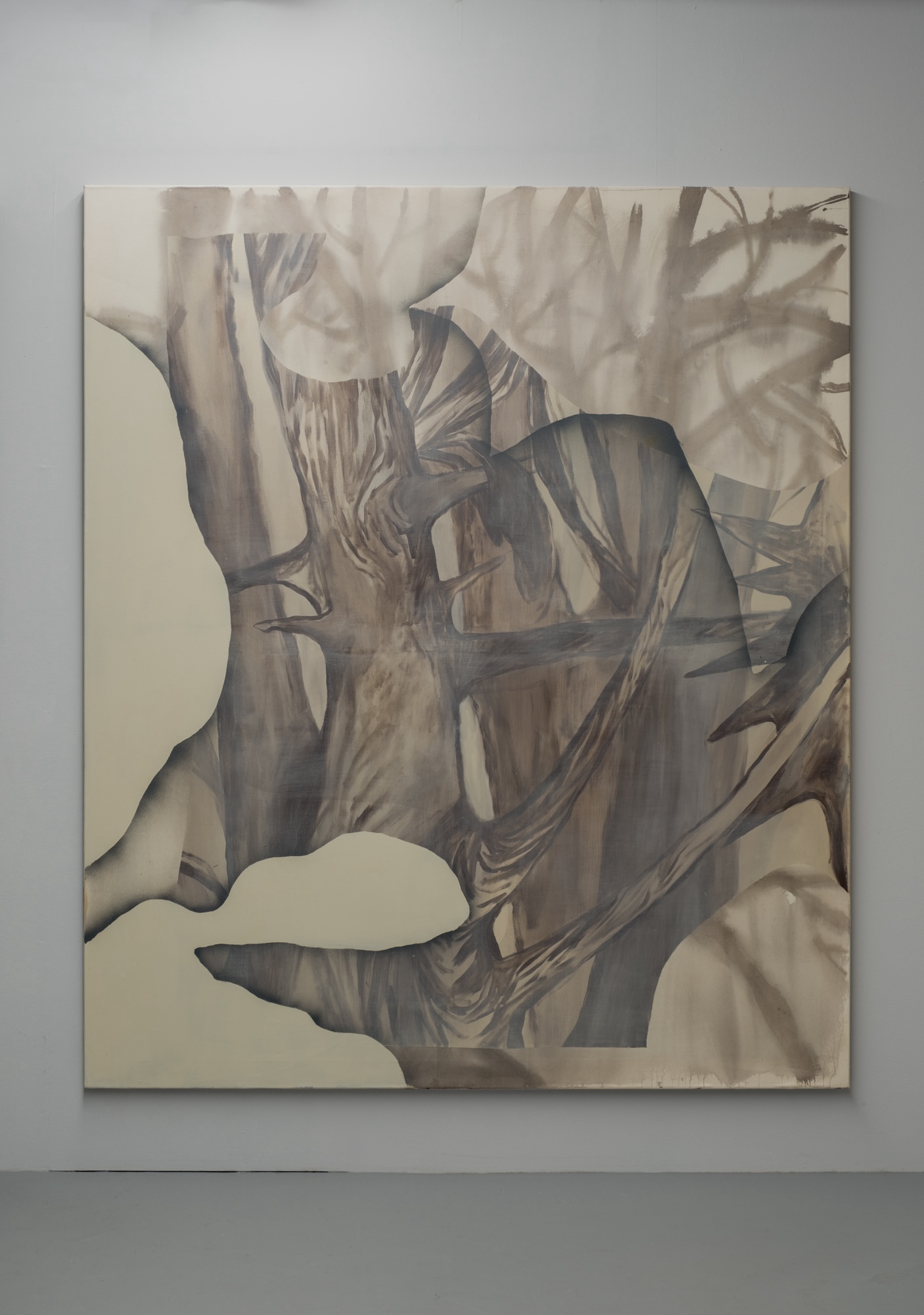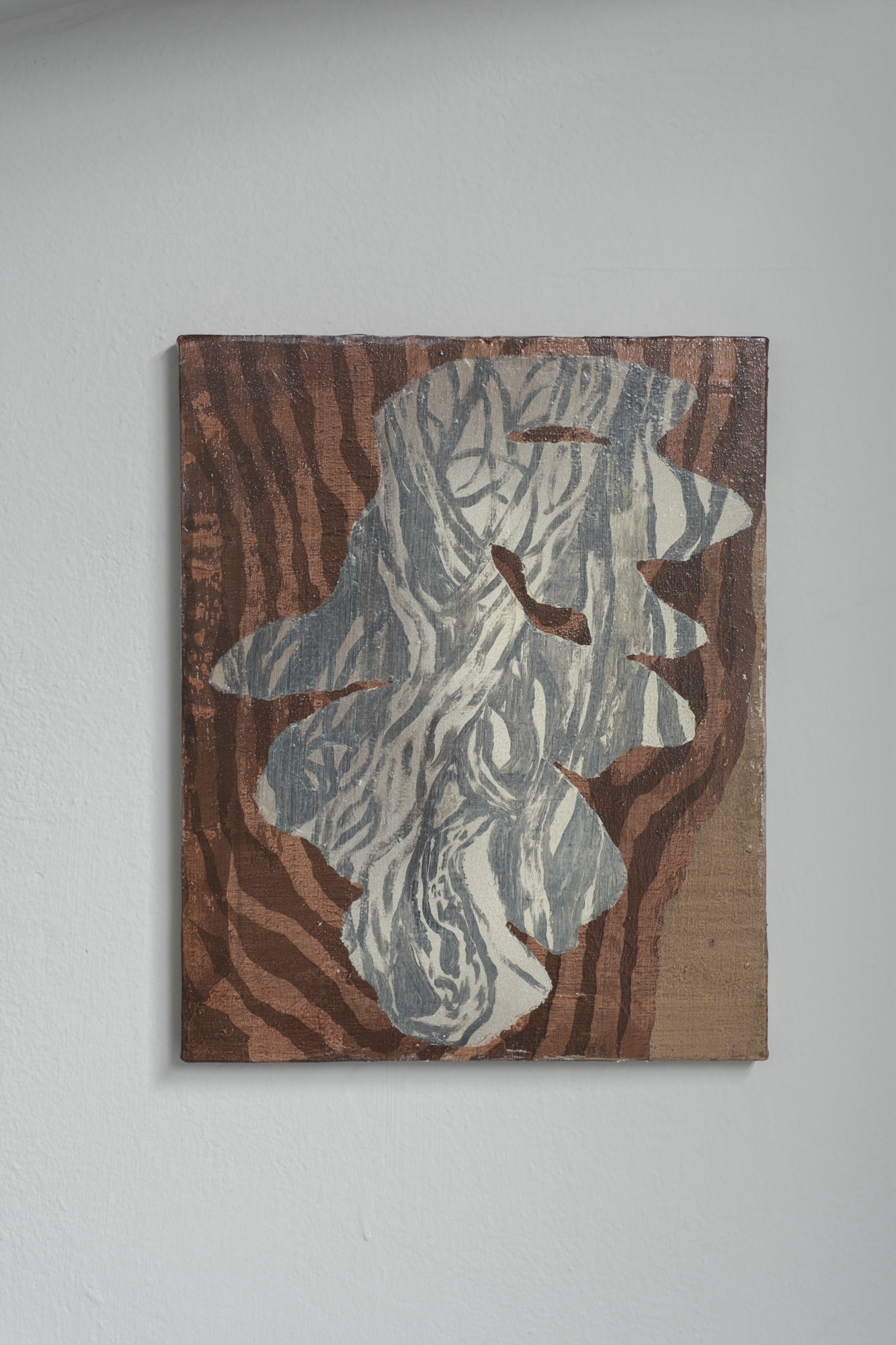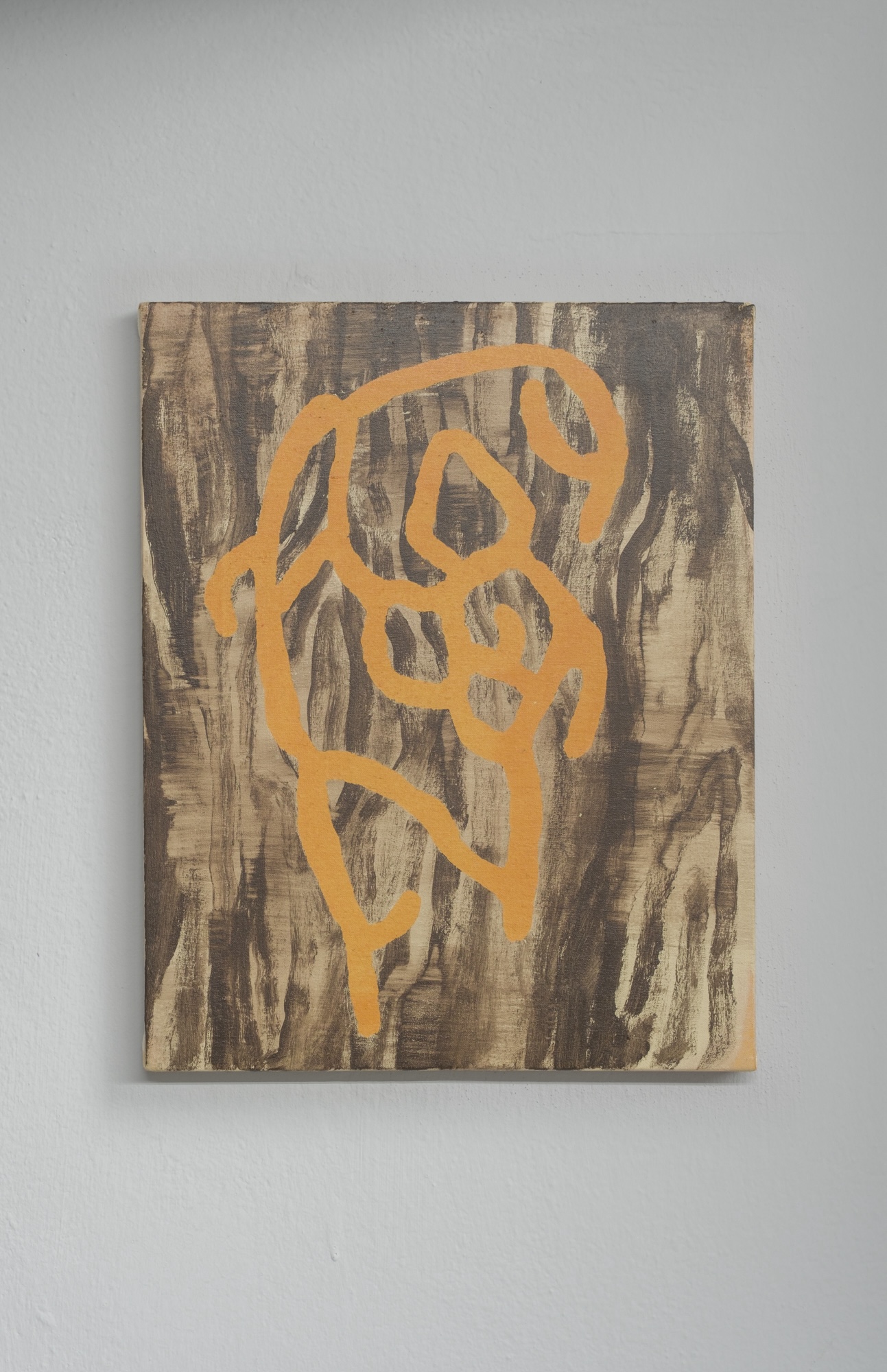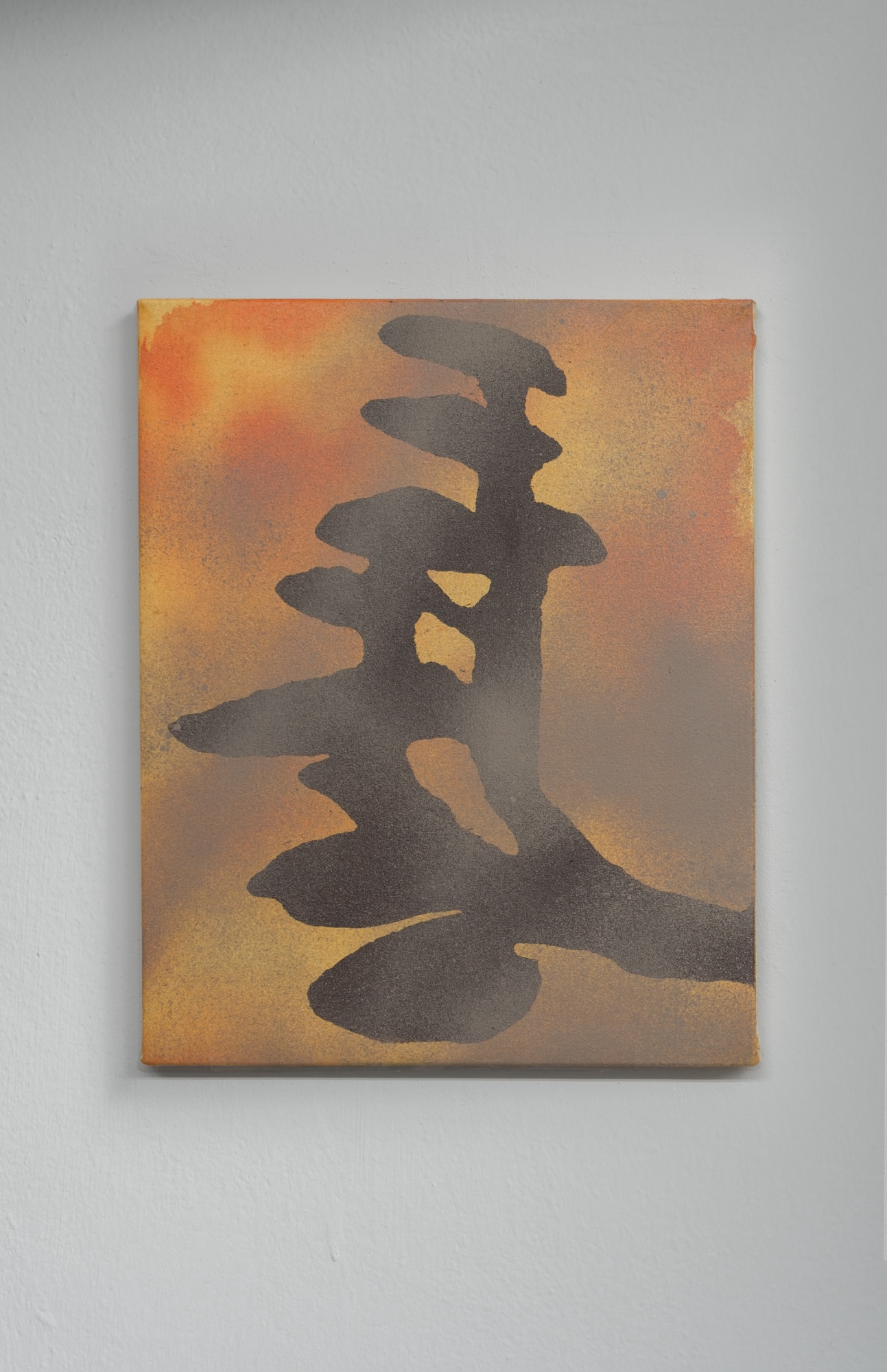Un asterisco ed una parola con un trattino, con un suono che conduce alla lingua inglese, sono i punti di partenza della programmazione artistica di SMDOT/Contemporary Art che vedrà coinvolti cinque artisti, con le loro relative personali nell’arco temporale del 2024.
L’asterisco che solitamente rimanda ad una ulteriore spiegazione diventa l’inizio e RE-SIGNATION, con il suo riferimento italiano RAS-SEGNAZIONE rappresentano il piano concettuale all’interno del quale i singoli artisti coinvolti muoveranno la loro ricerca. L’obiettivo ambizioso è quello di sviluppare la feconda intuizione del filosofo italiano Franco Berardi “Bifo” descritta nel suo libro “DISERTARE” pubblicato nel 2023, dove l’invito è provare a deviare da una traiettoria depressiva, verso la quale stiamo andando, ad una di ri-significazione. L’invito è quello di leggere il libro, in cui compaiono per la prima volta queste parole, in modo da avere più chiaro l’interessante percorso. In questo contesto c’è una mia appropriazione dell’uso creativo fatto della parola RAS-SEGNAZIONE che con l’inserimento del trattino inventa un nuovo significato e lo avvicina alla parola RE- SIGNATION con l’obiettivo attraverso la pratica artistica di cogliere l’invito di “Bifo” ad abbandonare i meccanismi abituali nei quali ci siamo incastrati ed attribuire nuovi significati ai segni ed ai simboli che ci circondano in un orizzonte totalmente cambiato. Siamo vissuti, fino alla fine del secolo scorso, guardando e muovendoci sempre più velocemente con un’idea di progresso infinito, quindi con l’idea di un orizzonte sempre in continuo allontanamento, oggi, abbiamo compreso che il nostro orizzonte è un orizzonte finito, quindi è tempo di modificare le “regole del gioco” altrimenti saremo tutti perdenti. Filosofia ed arte, possono essere due vettori di questo cambiamento, stimolando quella minoranza di individui disponibili ad accettare questa metamorfosi ed a costruire un nuovo milieu.
“<<Vegetale a chi?>>… Se le piante potessero parlare, forse sarebbe questa una delle prime domande che ci farebbero”. Con questa frase si conclude l’introduzione del libro di Stefano Mancuso e Alessandra Viola intitolato “VERDE BRILLANTE”, questa stessa domanda sembra risuonane in tutti i lavori di Anna Marzuttini, che nella sua prima mostra personale di Udine “CAN SEE THE WOOD” presenta una serie inedita di opere confrontandosi con RE-SIGNATION, il piano concettuale all’interno del quale si svolge la programmazione 2024 di SMDOT/Contemporary Art.
“CAN’T SEE THE WOOD” è una espressione inglese, (la sua versione integrale “CAN’T SEE THE WOOD FOR THE TREES”) con la quale si vuole portare l’attenzione sulla difficoltà e alcune volte la mancanza di volontà di porre il nostro sguardo umano, la nostra attenzione alla situazione globale guardando le cose troppo da vicino, concentrandosi eccessivamente su ciò che si trova accanto, su ciò che è più facile da vedere. Perdiamo in questo modo “The big picture”, la visione d’insieme. Anna Marzuttini con le sue tele di grande formato, e le sue sculture in ceramica ci costringe, attraverso un esercizio estetico stimolato dal suo lavoro pittorico e scultoreo, ad una nuova ri-conoscenza sensibile del mondo, di un mondo che esisteva prima di noi umani, di noi animali e che sicuramente ci sopravviverà. Un mondo dal cuore intelligente, dato per scontato, che grazie alla sua essenza, rappresentata dal suo non essere sempre in movimento (da qui la forma spesso dispregiativa di vegetale da parte dell’umano) si è evoluto risolvendo i problemi e non scappando, tipica modalità animale. Un mondo denominato vegetale che possiede i nostri cinque sensi, ai quali se ne aggiungono, almeno, altri quindici e non ha bisogno per vivere dei nostri organi grazie alla sua struttura, infatti, in quasi ogni sua parte coesistono le sue funzioni vitali. Il mondo vegetale, nel quale siamo immersi e che troppo spesso non conosciamo, non riconosciamo, non rispettiamo e di cui non ci prendiamo cura o forse sarebbe più giusto dire non facciamo in modo che si possa prendere cura di noi.
I lavori di Anna ci osservano, ci interrogano, si ribellano, ci avvisano, ci danno la possibilità di riposizionare il nostro sguardo, di guardare oltre l’individuo, di provare a imparare di nuovo ad esistere e non a funzionare. La parola esistere dal latino “exisistere” può essere tradotto con stare (sistere), fuori di (ex), quindi un invito ad imparare di nuovo a coesistere, a stare fuori con il tutto, non contro tutto, cercando di dominare tutto. Soprattutto le opere pittoriche di grande dimensione sembrano ricordarci che se in generale la pittura si può pensare, nel senso di teorizzare, cosa che vale per tutte le arti visive, sicuramente si può dipingere un pensiero ed in questo caso la figurazione cercata e trovata da Anna è quella realizzata con esaltante violenza dell’invisibile di tutto ciò che è visibile. La sua pittura non raffigura ma figura ciò che non riusciamo più a vedere, o, che abbiamo trascurato per pura pigrizia. Anna utilizza la sua ricerca artistica come se fosse una sciamana, produce le sue immagini, le sue sculture come strumenti di mediazione con lo spirito della foresta, provando a orientare il nostro sguardo, il nostro pensiero verso un’idea di coesistenza. Tra scienza e magia, tra uomo e natura, tra donna e uomo, tra male e bene, tra giusto ed ingiusto … mostrandoci la necessità di ritrovare una pratica quotidiana di totale equilibrio delle forme di vita, umane, animali e vegetali, ma anche visibili ed invisibili, come ancora oggi popolano quell’immenso meta organismo che è la foresta amazzonica che è luogo di resistenza vitale e di esempio. Nelle opere non c’è raffigurato l’uomo, l’animale. Le opere sono sempre manifestazione di un’assenza, quella dell’artista e poi del guardante, senza non esisterebbero. La ricerca ambiziosa è quella di una figurazione necessaria di una iper-forma di vita. Tre grandi tele, con paesaggi differenti, che diventano “ritratti” ci invitano verso questa urgenza di riconoscimento e cambiamento, La montagna vivente, (2023, acrilico, spray acrilico su tela, 200×150 cm), invita all’ascolto di tutto ciò che ci circonda, L’era incandescente (2023, acrilico e spray acrilico su tela, 200×390 cm), segnala l’urgenza della nostra azione di cambiamento, Eclissi terrestre (2023, grafite, acrilico, spray acrilico su tela, 200×170 cm), la riflessione sulla bellezza della nostra finitezza, mentre l’installazione Regno Antico,(serie, 2023-2024, installazione, dimensioni variabili) e la serie di quadri Spore, (pt.3, 2023, tecnica mista su tela, 35×28 cm cad.) con Corteccia (2023, ceramica smaltata, 26x14x5, 20x5x5 cm) mostrano il dettaglio vitale della capacità di resistenza del mondo vegetale.
L’intero corpo del lavoro esposto si trasforma per i guardanti in un’occasione feconda, attraverso il contatto con oggetti/soggetti estetici, in grado di costruire e sperimentare un nuovo pensiero planetario agente in spazi di coabitazione. Il non umano, acqua e cielo, con tutto ciò che contiene, deve entrare il più velocemente possibile nella nostra comunità, altrimenti saremo noi a rimanerne fuori infelici e sconfitti. Alla fine non così intelligenti.
Stefano Monti
An asterisk and a word with a dash, with a sound evocative of the English language, are the starting points for the artistic programming of SMDOT/Contemporary Art, that will see five artists present their solo shows throughout 2024.
The asterisk, which normally leads to a further explanation, here marks the beginning, and RE-SIGNATION, referring to the Italian term RAS-SEGNAZIONE, represents the conceptual field within which the individual artists’ research will unfold. The ambitious goal is to build on the fruitful intuition of the Italian philosopher Franco Berardi, also known as “Bifo”. In “DESERTING”, his 2023 book, he advocates that we should all try to deviate away from the current depressive trajectory and turn towards one of re-signification. The invitation is to read the book, in which these words appear for the first time, so as to be clearer about this interesting path. In this context, my appropriation of the creative use of the word RAS-SEGNAZIONE brings it closer to the word RE-SIGNATION with the insertion of the hyphen: it invents a new meaning with the objective of accepting Bifo’s invitation through artistic practice, abandoning the habitual mechanisms we are stuck in and attributing new meanings to the signs and symbols that surround us in a totally transformed landscape. Until the end of the last century, we were seeing and moving faster and faster, with an idea of infinite progress, that is with the idea of an ever-expanding horizon. Today, we have understood that our horizon is a finite one, so it is time to change the “rules of the game” otherwise we will all be losers. Philosophy and art can be agents of this change, stimulating that minority of individuals willing to accept this metamorphosis and build a new milieu.
“Who are you calling a vegetable?… If plants could talk, perhaps this would be one of the first questions they would ask us.” This is the last sentence in the introduction of Stefano Mancuso and Alessandra Viola’s book, “BRILLIANT GREEN”. This seems to be the question permeating all Anna Marzuttini’s works. In her first solo exhibition in Udine “CAN’T SEE THE WOOD” the artist presents a series of new works dealing with RE-SIGNATION, the conceptual field that encapsulates SMDOT/contemporary art’s programming for 2024.
The title of the exhibition, “CAN’T SEE THE WOOD” comes from the English expression “CAN’T SEE THE WOOD FOR THE TREES”, aiming to draw attention to the difficulty – and sometimes the unwillingness – to turn our human gaze and our undivided attention to the global situation, concentrating instead on looking at things too closely, focusing excessively on what is near, on what is easier to see. Missing out on “The big picture”, failing to see the overall view. Through an aesthetic exercise stimulated by her works, Anna Marzuttini’s large canvases and ceramic sculptures force us to a new sensitive re-cognition of the world, of a world that existed before us humans, before animals, and that will certainly survive us. The world’s intelligent heart is taken for granted, and humans often use “vegetable” as a derogatory term referring to passiveness, because the plant world is not always in motion. However, this means it has evolved to favour solving problems rather than running away in typical animal mode. The so-called vegetable world has our five senses and at least fifteen others. It does not need our organs to live thanks to its structure: indeed its vital functions exist in almost every part of it. We are immersed in the plant world, but too often we don’t know, recognize, or respect it, and often we do not take care of: it would perhaps be fairer to say we do not allow it to take care of us.
Anna’s works observe us, interrogate us, they rebel, warn us, give us the opportunity to redirect our gaze, to look beyond the individual, to try and learn again to exist rather than just function. The word exist comes from Latin “exisistere” and can be translated as “being” (sistere), outside (ex), therefore an invitation to learn again to coexist, to be out there with everything, not against everything, not trying to dominate everything. Her large pictorial works, in particular, seem to remind us that, if in general painting can be thought of, that is theorised, like all visual arts, then surely one can paint a thought. In this case the figuration sought and found by Anna is the exhilarating violence of the invisible in everything that is visible. Her paintings do not depict, but rather they show us what we can no longer see, that which we have neglected out of sheer laziness. Anna uses her artistic research as if she were a shaman: she produces her images and her sculptures as tools of mediation with the spirit of the forest, trying to direct our gaze, our thinking towards an idea of coexistence. Between science and magic, between humanity and nature, between woman and man, between evil and good, between right and wrong … showing us the need to rediscover a daily practice of total balance of life forms, human, animal and plant, but also visible and invisible, as they still populate that immense meta-organism that is the Amazon forest, a place of vital resistance and example. In the works there is no depiction of human beings or animals. The works are always a manifestation of an absence, that of the artist and then of the beholder, without which they would not exist. Her ambitious research explores the necessary figuration of a hyper-form of life. Three large canvases, with different landscapes turning to “portraits” invite us towards this urgency of recognition and change. La Montagna Vivente, (2023, acrylic, acrylic spray on canvas, 200×150 cm), invites us to listen to everything around us, L’Era Incandescente (2023, acrylic and acrylic spray on canvas, 200×390 cm), signals the urgency of our action for change, Eclissi Terrestre (2023, graphite, acrylic, acrylic spray on canvas, 200×170 cm) is a reflection on the beauty of our fleetingness. On the other hand, the installation Regno Antico, (series, 2023-2024, installation, variable dimensions) and the Spore series of paintings, (pt.3, 2023, mixed media on canvas, 35×28 cm each) with Corteccia (2023, glazed pottery, 26x14x5, 20×5 cm) show the vital detail of the plant world’s ability to resist.
The entire body of work on display represents a fruitful opportunity for the public, through contact with aesthetic objects/subjects, of building and experiencing a new planetary thought in spaces of cohabitation. The non-human, water and sky, with all that it contains, must enter our community as quickly as possible, otherwise we will be left unhappy and defeated. Not so smart in the end.
Stefano Monti










